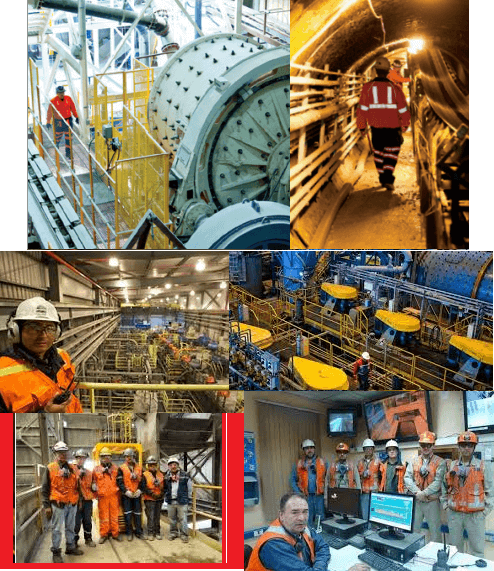 What I would like to do now is expand upon the grinding theory involved. Bring all of the earlier information together and show you how it relates to the operation of a mill and make you capable of Operating a Grinding Circuit correctly. Then I will explain the differences between Rod mills, Ball mills, SAG and autogenous mills and how to operate their circuits. The last subject under this heading will be the variables involved in circuit operations.
What I would like to do now is expand upon the grinding theory involved. Bring all of the earlier information together and show you how it relates to the operation of a mill and make you capable of Operating a Grinding Circuit correctly. Then I will explain the differences between Rod mills, Ball mills, SAG and autogenous mills and how to operate their circuits. The last subject under this heading will be the variables involved in circuit operations.
To begin with let’s review what we have learned. Very simply put, any difficulty experienced in grinding the ore will be due to one of the following. The size of the incoming feed, the work index of the ore, (if you remember this is the amount of work it takes to grind the ore,) and the tonnage to be processed.
To obtain the proper grind the correct density within the mill must be maintained. This density is the percentage of ore in relationship to the carrier water. The grind of a mill is obtained through the rods cascading and tumbling, crushing the ore between them.
These four item, SIZE, HARDNESS, DENSITY and CASCADE may be termed as variables. These are the things that may change in a grinding circuit enough to effect the end product, which is the grind. Each of these variables will have one or more factors controlling them. It is the purpose of this portion of the session to acquaint you with the common controlling factors and show you how to recognize them and what can be done about them.
This is the portion that begins building your operating skills. So it would only be proper to say a word about what is expected of you as a grinding operator. Your Supervisor, and metallurgical staff will set out what is known as OPERATING Parameters. This is a guide line as to where the control factors are set. These parameters are determined by metallurgical testing, then verified by what is known as the MILL RUN. The amount of leeway that the operator will have in guiding the operation of the concentrator plant will depend upon the uniformity of the composition of the ore body. If the mill feed is very constant then all the variables may be preset with an accurate end result forecasted. However in some ore bodies where milling conditions are constantly changing the operator and the shift foreman will be making many metallurgical decisions using experience and deductive reasoning as a guide.
As I said we are now going to talk about the different variables involved in grinding and we will pass along our experience in recognizing and dealing with them.
